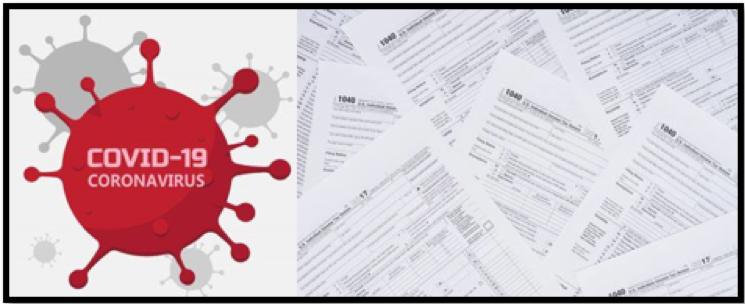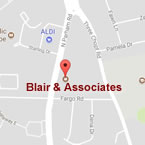
COVID-19 AND YOUR FED TAXES – ‘19
Income Tax Filing & Payment Deadlines
Extended to July 15, 2020
March 2020

Individual and Corporate Taxpayers…Heads-Up!
In response to President Trump’s emergency declaration, The IRS and Treasury Department announced that filing of income tax returns for individuals and non-corporate taxpayers is now extended until July 15. Additionally, income tax payments of up to $1 million of 2019 taxes due are also deferred until July 15.
Agency guidance specifies that the 90-day deferral of income tax payments by individuals and non-corporate businesses will not incur penalties or interest. That said, there are details to be noted:
• Tax payment relief will be automatically applied by the IRS and requires no further taxpayer action.
• Estimated Q1 tax payments for tax year 2020 will be extended to July 15.
• Penalties and interest will accrue to unpaid balances effective July 16, 2020.
• C-Corporations income tax deadlines are extended to July 15 for up to $10 million of tax due, without penalties or interest.
• The tax payment relief only applies to federal income tax, not state or other federal taxes.
• Trusts and estates are included in the extension.
Commenting on the above, in a press briefing this week, Treasury Secretary Steven Mnuchin said that individual taxpayers who owe up to a million dollars in federal taxes can defer paying until July 15. He explained, “The reason we’re doing a million dollars is because it covers a lot of pass-through and small businesses. This deferment allows those who owe a payment to the IRS to defer the payment until July 15 without interest or penalties. Treasury and IRS are ensuring that hard-working Americans and businesses have additional liquidity for the next several months.”
“All you have to do is file your taxes – you’ll automatically not get charged interest and penalties,” he said. “We encourage those Americans who can file their taxes to continue to file on April 15, because many will be able to take advantage of their refunds sooner, and we don’t want you to lose out on those refunds.”
Virginia Corporate, Sales & Individual Tax Payment requirements have been revised as follows:
• Businesses impacted by COVID-19 may request to defer payment of state sales taxes due, March 20, 2020 for 30 days.
• When granted, businesses may file no later than April 20, 2020 with penalties waived.
• Individual and corporate income tax payments are due June 1, 2020. Note: Filing date is unchanged.
• Interest on payments made after the original deadlines will accrue interest.
If any of the foregoing seems unclear as to how it applies to your specific
circumstances, please keep in mind that Blair + Assoc will help.
Give us a call or drop an email. We’ll respond immediately!
- TWO FACTS ABOUT THE NUMBER 10!
- RMD AGE JUMPS FROM 70½ TO 72 IN 2020
- 'TIS THE SEASON TO BE JOLLY…AND PREPARE FOR TAX SEASON
- THE GIG ECONOMY…OPPORTUNITIES AND EXPOSURES
- THE IRS IS WATCHING … HOW NOT TO BE WATCHED
- $594 MILLION VIRGINIA TAX WINDFALL
- TO ITEMIZE OR TAKE THE STANDARD DEDUCTION?
- LEVERAGING YOUR CHARITABLE CONTRIBUTIONS
- AGE 70½ … OR ABOUT TO BE … WITH AN IRA?
- OVER 70½ AND FEELING CHARITABLE
